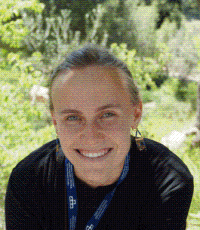It is with pleasure that I have joined Diliana Atanassova and Lina Elhage-Mensching in the Sahidic Euchologia project in the Göttingen VMR. Looking through the transcriptions on MONB.VE, on one of the newly assigned leaves of the codex, Paris, BnF, Copte 132.3 fol. 221 recto, I have been able to identify six fragmentary lines from the prooimion of the fraction of the liturgy of St Gregory. Here is the transcribed page. The text was known so far in a Greek[1] and in a Bohairic[2] recension, which differ from each other in the address of Christ. It cannot be known which recension (if any) the Sahidic text agreed with, as the legible text only begins with the clauses that describe Jesus’ action at the Lord’s Supper and ask for their actualization in the present rite. These clauses probably go back to very ancient formulas accompanying fraction, as they are already attested in a fourth-century papyrus (the ‘Milan euchologion’, see the Trismegistos Database TM 64589). The Sahidic recension of the prooimion contains one additional clause compared to the Greek and the Bohairic, “who once signed (ⲥⲫⲣⲁⲅⲓⲍⲉ), sign also now,” see lines 29-30 of the recto.
Since the other side of the fragment cannot contain the end of the anaphora of St Gregory, it has to follow the prooimion and is thus the verso. The preserved words indeed agree with a fraction prayer or an inclination before communion prayer, though it cannot be identified yet. As my colleagues Lina Elhage-Mensching and Diliana Atanassova pointed out, the recto proves to be the flesh side, and the content positions the fragment after page 30 of the euchologion, which preserves the institution narrative of the anaphora of St Gregory, and before page 39, which preserves the anaphora of St Cyril. Between page 30 (last leaf of the second quire) and page 39 (the fifth leaf of the third quire) only two leaves can have the order hair/flesh, i.e. the second and the forth leaves in the third quire). As we know[3], codex MONB.VE began with a flyleaf, so the second leaf of the third quire corresponds to the pages 33/34 and the fourth leaf to the pages 37/38. However, since page 39 contains a continuation of the anaphora of St Cyril from page 38, this allowed Atanassova and Elhage-Mensching to position the Paris fragment as the second leaf of the third quire.
Thus, our combined efforts have made it possible to reconstruct the page numbers of the Paris fragment as [33]/[34]. The new placement of the Paris fragment in the codex structure of MONB.VE can be seen here.
[1] E. Renaudot, Liturgiarum orientalium collectio, Frankfurt, 1847 vol. 1:114.
[2] E. Hammerschmidt, Die koptische Gregoriosanaphora, Berlin, 1957, 64.
[3] D. Atanassova and L. Elhage-Mensching, “Die sahidischen Euchologia des Weißen Klosters – eine kodikologische Bilanz”, in: D. Atanassova, F. Feder, H. Sternberg-el Hotabi (eds.), Pharaonen, Mönche und Gelehrte. Auf dem Pilgerweg durch 5000 Jahre ägyptische Geschichte über drei Kontinente. Heike Behlmer zum 65. Geburtstag, unter Mitarbeit von Theresa Kohl (Texte und Studien zur Koptischen Bibel 4), Wiesbaden 2023, 61–78.
 Blogs
Blogs  Letzte Blogger
Letzte Blogger 




